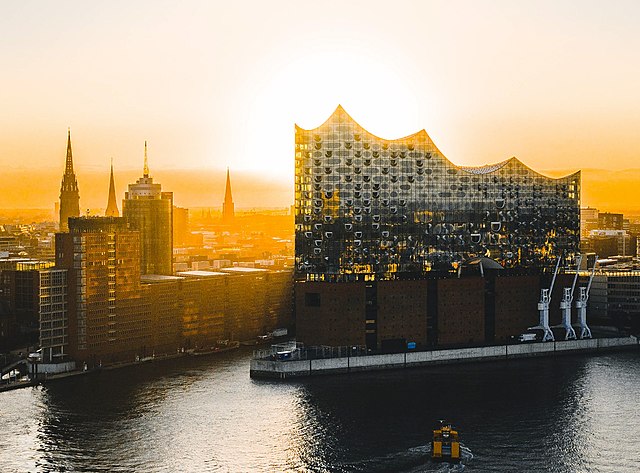The Great fire of Hamburg began early on May 5, 1842, in Deichstraße and burned until the morning of May 8, destroying about one third of the buildings in the Altstadt. It killed 51 people and destroyed 1,700 residences and several important public buildings, necessitating major civic rebuilding and prompting infrastructure improvements. The heavy demand on insurance companies led to the establishment of reinsurance.
The Great Fire, 1842 painting by Peter Suhr
Nikolaikirche on fire
"View of the Conflagration of the City of Hamburgh", Illustrated London News, week ending May 11, 1842
Photograph from the roof of the Stock Exchange of ruins after the fire, by Hermann Biow, one of the earliest news photographs
Hamburg, officially the Free and Hanseatic City of Hamburg, is the second-largest city in Germany, after Berlin, and 8th-largest in the European Union, with a population of over 1.9 million. The Hamburg Metropolitan Region has a population of over 5.1 million and is the ninth-biggest metropolitan region by GDP in the European Union.
Image: Hamburg, Landungsbrücken 2016 3131 7
Image: Elbphilharmonie Eastside View With Sandtorkai Quay Magellan Terraces Sandtorpark 2022 06 04 16 32
Image: Hamburg Speicherstadt
Image: Elbphilharmonie zum Sonnenaufgang (cropped)








